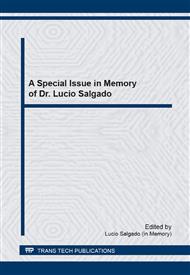p.100
p.106
p.111
p.116
p.122
p.128
p.137
p.143
p.149
Acellular Dermis Obtainment to Fibroblastic Cell Culture and Tissue Engineering
Abstract:
Tissue injuries are the main factors that lead to treatment by skin culture. In cases where the damage is extensive patient has insufficient amount of tissue to recover the area lost. A possible solution is the use of tissue engineering. Dermal substitutes must provide features and functions as close as possible to the normal skin. The acellular dermis can be obtained from the own patient and represents a viable alternative as a graft. The acellular dermis is used as a dermal analogue to the implantation of cells for tissue engineering treatment. The aim of this study was to compare different ways of obtaining mouse skin acellular dermis and characterize this dermis by macroscopic visualization, light and atomic force microscopy and cell culture.
Info:
Periodical:
Pages:
122-127
Citation:
Online since:
September 2014
Keywords:
Price:
Сopyright:
© 2015 Trans Tech Publications Ltd. All Rights Reserved
Share:
Citation:


